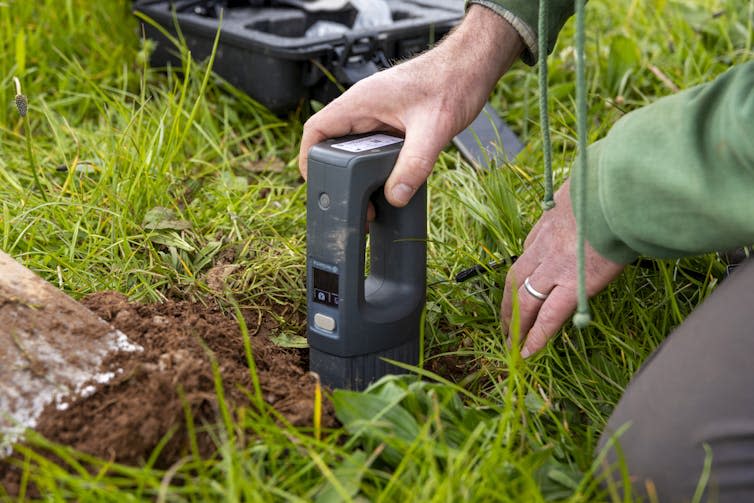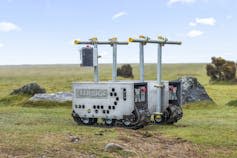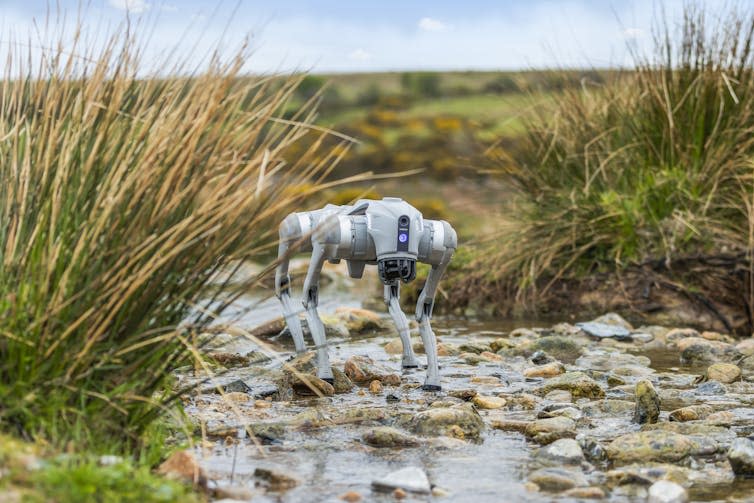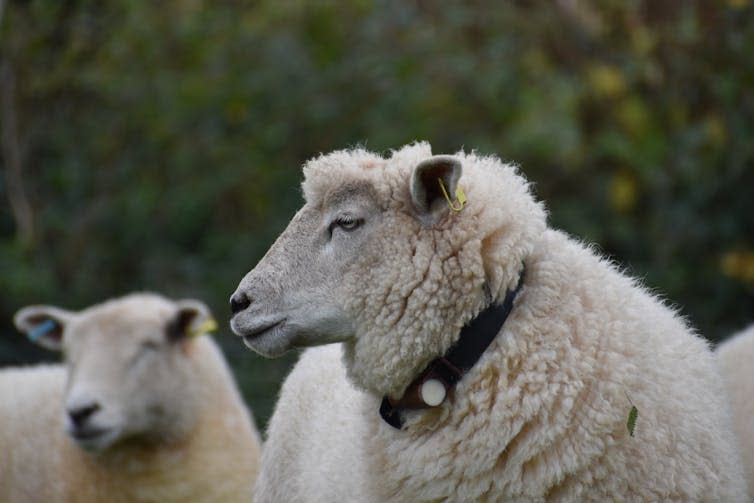From robots and drones to sheep trackers, new tech can help farmers monitor and improve soil health
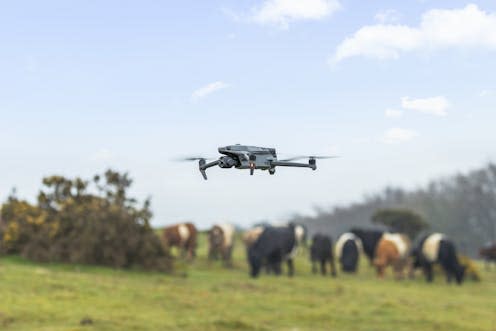
Twelve million hectares of agricultural soils are lost globally through soil degradation every year. As an ecologist, I work alongside farmers and growers in the field and have seen how farming can help solve this global soil crisis.
A report by the UK government’s Environment Agency in 2019 estimated that 17% of soils in England and Wales showed signs of erosion. An estimated 4 million hectares of agricultural land were at risk of compaction, with soil compressed by grazing animals or heavy machinery so that air pockets between soil particles get squeezed out. Another 300,000 hectares of soil were contaminated with pollutants.
But metrics of soil health are difficult to quantify and regular systematic sampling strategies to assess soil function are rarely adopted by governments over the long term.
Farmers are increasingly considering practices such as regenerative agriculture that limit damage to, and even help to regenerate, soils. Planting cover crops, reducing or carefully managing stocking rates, direct drilling and reduced tillage strategies, as well as planting trees and increasing organic matter, can all help. Farmers and soil scientists are also starting to use clever tech to reliably measure changes in soil condition.
Despite having studied soils for some time, I only recently realised that soil assessments, especially those recommended to farmers, tend to focus on physical and chemical measures, without much consideration of the diverse communities of organisms (from microbes and fungi to earthworms and plants) that live in the soil.
Sampling strategies don’t tend to consider the huge variation that occurs in soil conditions, even within a field or between seasons. Detecting changes over years or between management practices is often prohibitively expensive to farmers, as large numbers of replicate samples are needed.
New research and technology can help close this gap. Here’s how:
1. Satellite sensors
Intensive farming contributes to the decline in healthy soils. Bare soil is easily eroded by wind and rain, and extreme weather is more likely with climate change. Ploughing can break up microbial networks of fungi, bacteria and other similar organisms, change the way soil particles are shaped and fit together and release carbon stored as organic matter.
Heavy grazing can increase compaction, reducing the water absorbing capacity of soils. Input of synthetic chemical fertilisers and pesticides can harm invertebrates and microbes above and below ground, while releasing harmful pollutants into rivers and seas.
Satellite-mounted sensors have revolutionised the data available to visualise landscapes, including farms. It is now possible to use satellite images alongside innovative agri-tech to monitor plant growth and disease, as well as degradation and water content of soil, and to see changes over time. So better decisions can be made about how best to farm sustainably without further degrading the soil in certain places.
2. Soil sensors
The soil beneath our feet is teeming with life and most land-living organisms either rely on soil for nutrients or fertilise the soil through excretion and decay. Using sensors to monitor how soil conditions are changing can tell us whether these are more or less favourable for particular organisms to live.
Soil sensors can be used without disturbing crops or having to send material away for laboratory analyses. With calibration, highly-portable, handheld near infrared (NIR) sensors can detect soil organic matter such as decayed plants or manure - that’s a good indicator of healthy and fertile soils.
At Plymouth, we are mounting sensors onto manned or autonomous drones and robotic platforms - this is a quick and easy way to collect samples and information on organic matter, even on rough terrain. Smaller and more affordable robotic “dogs” are better able to move along the bottom of hedgerows or through rows of densely packed shrubs, like lavender.
In the future, static field-based sensors could be powered by harnessing energy from chemical reactions taking place in the soil microbial community itself.
3. Animal sensors
Individual sensors, similar to Fitbits and other activity loggers, are increasingly being used to monitor animal welfare, particularly in indoor farming systems, for example with cows. Sensors that detect movement can also be used on sheep and cows grazing outdoors.
By telling farmers where and how animals move around the environment, these sensors can help pinpoint areas where the soil is at high risk of compaction so they can address this.
In rural areas, poor internet connection can limit use of these sensors so we are working with farmers in upland areas such as Dartmoor using long-range wide area networks (LoRaWAN) - the sensor transmitters are fixed to fence posts or on animals and use low-power radio frequencies to relay information immediately to farmers and researchers.
4. DNA detection
Another exciting development is new mobile DNA-based technology. Small hand-held sequencers and machines that amplify and quantify DNA, alongside mobile laboratories, allow farmers to sample and sequence in the field and within a short time frame.
Fungal diseases that live in soil and can devastate crops, such as Fusarium, can be detected using simple methods similar to COVID tests. Using hand-held sequencers, I have been working with organic growers to build pictures of microbial communities in fields with different crops and management practices. These methods only take a few days to produce results, meaning that the impact of changing practice can be seen quickly.
New technology opens up possibilities for quicker and cheaper monitoring of soil function. However, in order to determine the most appropriate technology, it is really important that researchers and practitioners work together to come up with simple solutions to monitor the state and health of our soils. This will enable farmers to decide the most appropriate management practice to protect their soils for future generations.

Don’t have time to read about climate change as much as you’d like?
Get a weekly roundup in your inbox instead. Every Wednesday, The Conversation’s environment editor writes Imagine, a short email that goes a little deeper into just one climate issue. Join the 30,000+ readers who’ve subscribed so far.
This article is republished from The Conversation under a Creative Commons license. Read the original article.

Jennifer Rowntree works for the University of Plymouth.

 Yahoo News
Yahoo News 